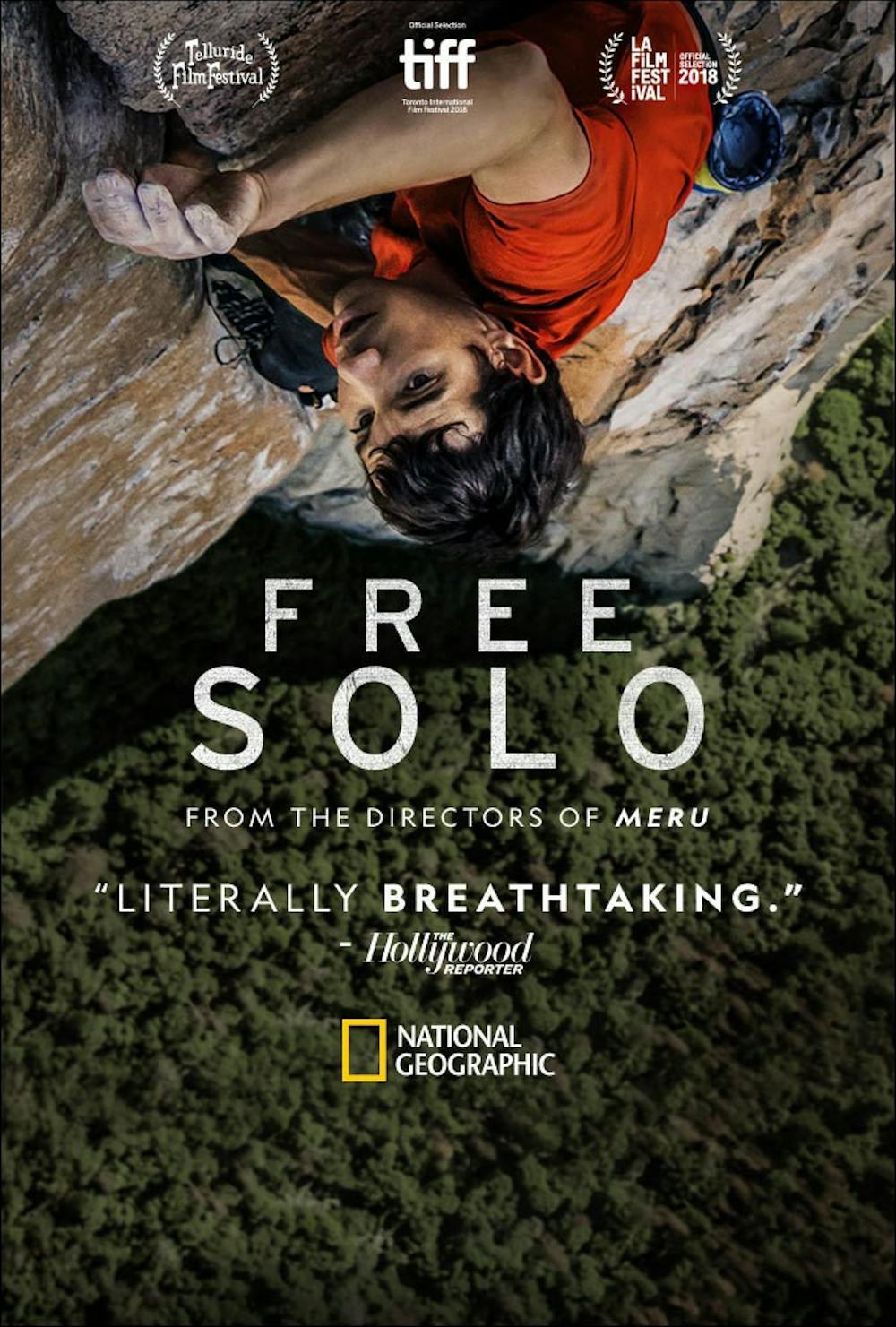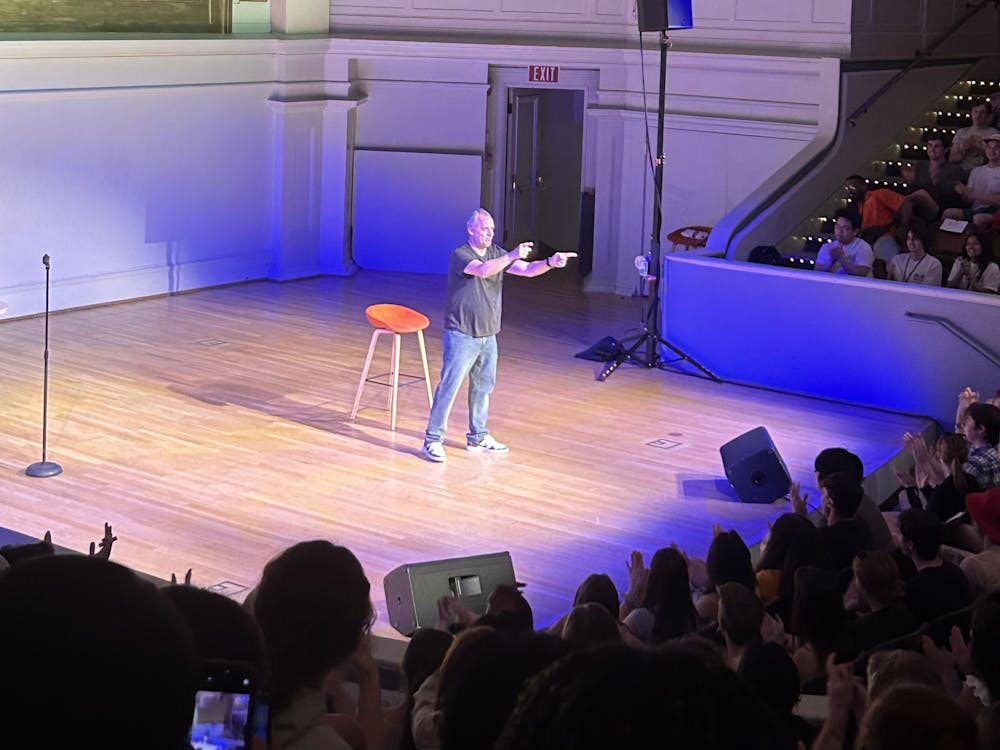The Virginia Film Festival boasts an impressive slate of documentaries every year, highlighted in 2018 by “Free Solo.” The movie chronicles professional climber Alex Honnold’s journey towards becoming the first person to free solo El Capitan, a 3000-foot wall of granite in Yosemite National Park. The film is about more than just the climb, though directors Jimmy Chin and Elizabeth Chai Vasarhelyi attempt to unpack the psyche of Honnold, document one of the riskiest athletic achievements of all time and confront the ethical questions of filming a person risking death.
Judging from the number of Subarus in the parking lot and Columbia vests in the audience of the St. Anne’s-Belfield auditorium on Saturday afternoon, the crowd gathered to see “Free Solo” was familiar with the world of professional rock climbing. One guy literally brought his gear into the screening, which seemed a little impractical for the relatively compact venue. But a few minutes into the film it became clear that no amount of exposure to the sport would make it any easier to watch Honnold climb.
Honnold’s speciality is free solo climbing — scaling a mountain without ropes, harnesses or any safety equipment.
“Free Solo” reminds the audience multiple times of the height of the accomplishment and the risk attached — an Olympic level achievement where not getting gold means instant death. A central thrust of the film is attempting to explain what kind of person would choose this as a way of life.
Honnold spends most of the movie thousands of feet in the air, either practicing the route with harnesses or free solo climbing different summits in preparation. For a significant portion of the film, however, the climber is observed in his habitat — the renovated van he calls home.
As a character study, “Free Solo” works best when it lets Honnold speak for himself. He’s a gifted climber, a generational talent in the sport. He also has little experience with long-term relationships, no filter, and — as discovered in preparation for his climb — an amygdala a bit harder to activate than those found in “normal” brains. (The amygdala is the part of the brain that controls fear.)
Honnold’s girlfriend Sanni McCandless is also a captivating part of the movie’s exploration. As Honnold prepares for his climb, he also navigates a relatively new relationship with McCandless, who grows more important to him as months of training pass. Physical preparation takes a backseat to the mental problems Honnold must navigate as he faces voluntary near-death experiences and attempts to express his emotions to another person.
Chin and Vasarhelyi also devote much of the documentary to the concerns and strife of the crew as they debate the ethical implications of filming Honnold’s climb. Filming on the ground, which feels like a moment of relief for the viewer, becomes gut-wrenching when someone expresses their fear that Honnold may just fall out of frame, ending his life. Before the attempt, the filmmakers discuss positioning and who will be the one to call 911 if the worst happened. Watching Honnold climb will leave anyone’s palms sweaty, staring at his single thumb keeping him attached to the vertical granite. But equally nerve-wracking is the sight of his friends turning away from the camera, unable to watch his nearly four-hour-long ascent.
“Free Solo” covers a lot of emotional, ethical and athletic ground, while remaining captivating in every frame. Whether the camera pans on a stunning view of Yosemite or rests on Honnold as he makes dinner on the stove in his van, Chin and Vaserhelyi capture the audience’s attention until the credits roll to the tune of a confounding Tim McGraw single. The song sounds like the baby brother of “Live Like We Were Dying” and was a truly jarring experience after an hour and 40 minutes of wincing and clenched fists.
“Free Solo” is a directorial triumph. It succeeds not in being fearless, but rather in exploring Honnold’s relative lack of anxiety — yet knowledge of the stakes — compared to the serious doubts of the filmmakers. A stunning, contemplative piece on sports, art and the human will, “Free Solo” is innovation on the big screen.





